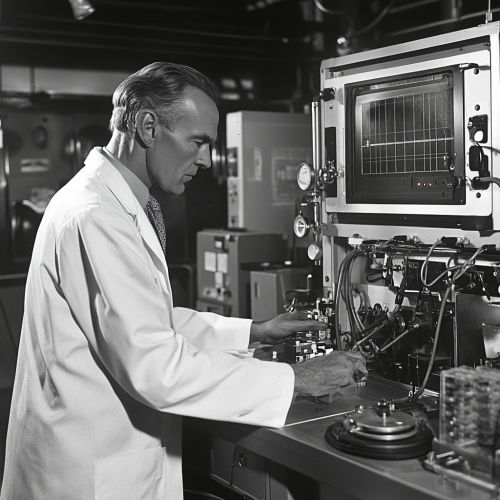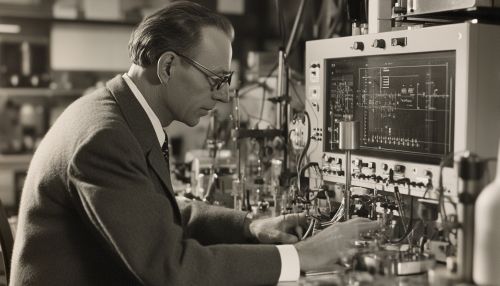Glenn T. Seaborg
Early Life and Education
Glenn Theodore Seaborg was born on April 19, 1912, in Ishpeming, Michigan, USA. His family moved to California when he was ten years old. Seaborg attended the University of California, Los Angeles (UCLA), where he earned his Bachelor of Arts in Chemistry in 1934. He then pursued graduate studies at the University of California, Berkeley, where he completed his Ph.D. in Chemistry in 1937 under the supervision of Gilbert N. Lewis.
Academic Career
After completing his Ph.D., Seaborg remained at UC Berkeley as a research associate. He worked closely with Ernest O. Lawrence at the Radiation Laboratory, where he contributed to the development of the cyclotron, a type of particle accelerator. Seaborg's early research focused on the isotopes of elements and the chemistry of actinide elements.
Discovery of Plutonium
One of Seaborg's most significant achievements was the discovery of plutonium (element 94) in 1940. Working with Edwin McMillan, Joseph W. Kennedy, and Arthur Wahl, Seaborg successfully produced plutonium by bombarding uranium-238 with deuterons. This discovery was pivotal for the development of nuclear weapons and nuclear power. Plutonium-239, an isotope of plutonium, was later used in the first atomic bombs.


Manhattan Project
During World War II, Seaborg was a key figure in the Manhattan Project, the United States' effort to develop atomic weapons. He led the plutonium chemistry section at the Metallurgical Laboratory in Chicago, where he developed methods for the production and purification of plutonium. His work was crucial for the success of the project and the eventual creation of the atomic bomb.
Post-War Contributions
After the war, Seaborg returned to UC Berkeley, where he continued his research on transuranium elements. He played a central role in the discovery of several new elements, including americium (element 95), curium (element 96), berkelium (element 97), californium (element 98), einsteinium (element 99), fermium (element 100), mendelevium (element 101), nobelium (element 102), and seaborgium (element 106), which was named in his honor.
Nobel Prize in Chemistry
In 1951, Seaborg and Edwin McMillan were awarded the Nobel Prize in Chemistry for their discoveries in the chemistry of transuranium elements. This recognition solidified Seaborg's reputation as one of the leading chemists of his time.
Chancellor of UC Berkeley
Seaborg served as the Chancellor of UC Berkeley from 1958 to 1961. During his tenure, he worked to expand the university's research capabilities and improve its academic programs. He was also an advocate for the peaceful use of nuclear energy and played a role in the establishment of the Lawrence Berkeley National Laboratory.
Chairman of the Atomic Energy Commission
In 1961, President John F. Kennedy appointed Seaborg as the Chairman of the United States Atomic Energy Commission (AEC). He served in this position until 1971, overseeing the development of nuclear energy policies and promoting international cooperation in nuclear research. Seaborg was a strong proponent of the Nuclear Non-Proliferation Treaty and worked to limit the spread of nuclear weapons.
Later Years and Legacy
After leaving the AEC, Seaborg returned to academia and continued his research and teaching at UC Berkeley. He remained active in the scientific community, publishing numerous papers and advocating for science education. Seaborg passed away on February 25, 1999, but his contributions to chemistry and nuclear science continue to be recognized and celebrated.
